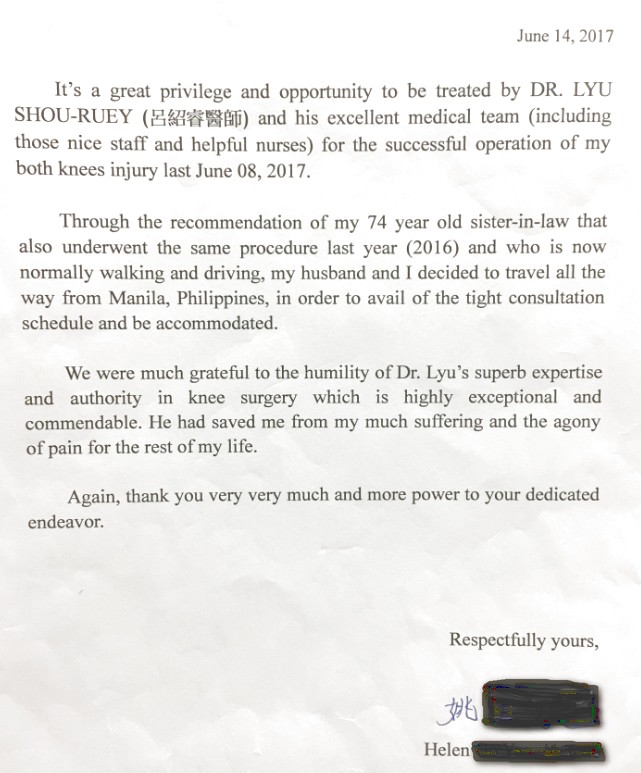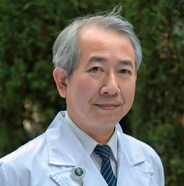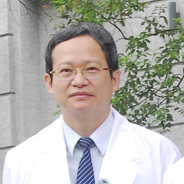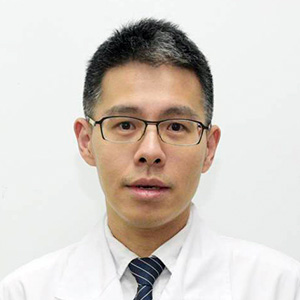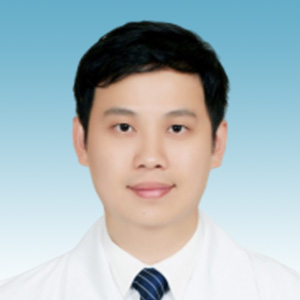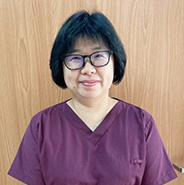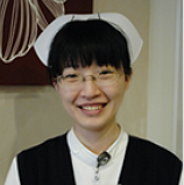我們創造的不只是醫療業績,更是醫學專業的價值主張
1995年,呂紹睿醫師與膝關節內「隱藏病灶」的驚鴻一瞥,讓他帶領研究與醫療團隊走上二十餘年的探索之路;不但發現「內側摩擦現象」是骨性膝關節炎的致病機轉,更因此建構出兼顧預防醫學、臨床治療與學術研究的「膝關節健康促進方案(KHPO)」。此一突破性的醫療新科技,除了病患滿意度高達94.1%,也節省大量醫療成本外,更吸引國外醫界前來學習。
「國際膝關節健康促進中心」的特色與服務
- 獨創整合型治療方案「膝關節健康促進方案(KHPO)」。
- 成立「慈濟醫療志業膝關節健康促進中心」並複製至國內外醫療單位。
- 出版中、英文科普專書暨知識繪本,推廣「KHPO」理念至各個年齡層。
針對「骨性膝關節炎」病患的全人全程照護
- 第一〜二期:智慧護膝保健,不需吃藥不用打針。
- 第二〜三期:關節鏡軟骨再生促進手術,軟骨有80%再生機會。
- 第四〜五期:膝關節微重建及精準人工關節置換手術,滿意度接近100%。
成果與永續發展
- 獲選醫策會「醫院參與研發醫管服務整合解決方案」委外案,「KHPO」成為國家推廣至國際之重點醫療特色。
- 與國立中正大學「高齡研究基地」合作,進行社區推廣。
- 提供可複製的「膝關節健康促進及醫療照護模組」,培育專業人才。



Albert Chung: A journey to return my active life
Starting a healthy lifestyle
From July 2013, after I had worked for the world's largest IT company for 30+ years, I thought it was time that I should start to build up a healthy lifestyle and to lose weight. Therefore, I designed a fitness program mixing with swimming/gym workouts, cycling and walking, plus putting more focus on dieting.
In this program, I demanded myself swim 1000 meters in an Olympic swimming pool plus 30 minutes of gym workout, or cycling for one hour, or walking 90 minutes every day. At the same time, I carefully monitored the intake of my daily food. I was able to strictly implement the plan whether I was off the work or taking overseas holidays, or after I returned to work full time in Autumn 2015.
I joined a bushwalking group in Summer 2014. This group mainly walked along trails through Sydney National parks & reserves; each bushwalk could last 4-6 hours, including breaks, uphill/downhill walks.
I lost fourteen kgs in eighteen months. However, I could not lose more weight with the same exercising routines.
A series of setbacks
In one evening of Summer 2015, I fell off from the bicycle when a child blocked my eyes with his kite line while I was cycling with headphones around an oval.
I had blood all over my face; some of my teeth were almost broken. I had scratches on my legs and arms. This dreadful fall killed cycling from my fitness agenda. Besides, I found swimming was not convenient and not straight forward. I needed to drive 15-20 minutes and paid membership to swim at an Aquatic Centre.
All these incidents and issues left walking was the only option that I had to continue my slimming program.
From Autumn 2016, I took two bush walks and five 90-minute of walks per week. Each bush walk could take 3-5 hours and required significant uphill/downhill steps. Even with these heavy exercises, I still could not lose more weight.
From Summer 2016, I started to feel the knee pain when I bent or straightened it. I could not walk far enough; I could not walk as quickly as I was able to. I could promptly feel aching whenever I walked a bit further or faster. It was too much for me to step up/down the stairs. I needed to take the lifts or escalators to mitigate the pains.
A few bushwalkers gave me recommendations on how to alleviate the pain. None of these recommendations was able to relieve my agony; they did not think my issue was severe. No one would worry I might have knee osteoarthritis issue. Everyone thought my troubles would disappear if I could let my knees to have more rest.
All of a sudden, I could not do my regular walking exercises and maintain a more active lifestyle.
Dire outlook
I still felt discomfort even though I stopped my regular exercises. I walked with a limp whenever I moved. It was until I had an appointment with a physiotherapist that I had a better picture of my suffering. The therapist diagnosed that my cartilage might have worn away. With the cartilage loss, the joint space narrowed, and bone rubbed on a bone. At that point, there was little, or no cartilage left to do its job as a shock absorber. He bluntly urged me to see an orthopaedic specialist as quickly as I could.
Dr Charlie Lin, an orthopaedic surgeon at Sydney Adventist Hospital, advised me in February 2016 that I needed to take a partial knee replacement surgery to tackle my knee issue. If I didn't take this surgery, I needed to make a Total-Knee-Replacement operation five years later. His advice was a significant blow. I had never thought the overwork of my knees could potentially be such massive damage to my daily life.
Nevertheless, I would not commit a knee replacement surgery until I had tried all options. I tried to receive a second opinion; I searched for all studies related to Knee Osteoarthritis. It seems the partial/total knee replacements are the only treatments available in Australia to cure my knee pain issues. Therefore, I looked for alternatives in my home country Taiwan.
ACRFP – Not just an alternative
I found a YouTube at the website https://www.youtube.com/embed/1S3Y8xW_tK8
It is a video from Tzu-Chi DaAi TV. I watched this video several times. It gave me pretty fresh ideas. I printed the ACRFP (Arthroscopic Cartilage Regeneration Facilitating Procedure) document which was written by Dr Lyu and discussed this new therapy with Dr Lin. He was not convinced if the procedures mentioned in this document could heal my damaged knees; he also argued this medical document was not approved or accepted in the Global Health community. He did not encourage me to pursue this option.
[ACRFP, see https://www.amazon.com/Dr-Knee-Surgeons-Alternative-Replacement-ebook/dp/B01BH070FE for ACRFP definition and a few clinical cases, some with X-rays, where it helps patients, and success rates of ACRFP: locations 181, 092-093, 126, 258 of 1929.]
Nonetheless, the ACRFP was the only treatment that I could keep my knees intact. I did not have a choice but to make an appointment with Dr Lyu. I was astounded to realise he was so popular. It was so difficult to make the appointment call to go through or have the email to be forwarded. Eventually, we found a right path to make an appointment with Dr Lyu. I made a booking to meet him in May 2017.
It was only through the chats that I had with clinical patients on the appointment day to make me feel comfortable to go for the ACRFP. These patients gave me testimonies on how their lives had changed after taking the ACRFP. From the conversations, I found the confidence they had and the gratitude they could express from the services by Dr Lyu and his team were extraordinary.
In my appointment with Dr Lyu. He showed me the X-ray of my broken knees. He confirmed I had level 3 of degeneration in my right knee, and level 2 of degeneration in my left knee. He explained what the ACRFP could help me and what self-care exercises I should take before the operation took place.
In this trip, I reserved December 7 as the day of taking the ACRFP. Dr Lyu and his team suggested I needed to practice three self-care exercises four times a day. They are Raising the leg, Knee bending and Knee pressing. They would like to see if these exercises could assuage my knee pain or improve my physical agility.
[3 rehab exercises: After the ACRFP, patients must do three post-op rehabilitation exercises several times a day to strengthen the quadriceps and increase the range of motion of the knees. ( the Post-operative Cartilage Regeneration Facilitating Modalities (PCRFM). “The PCRFM--daily rehab exercises by the patient--is an integral part of a successful KHPO treatment. Once the surgeon has done the ACRFP, the rest is, rightfully, in the hand of the patient." see https://www.amazon.com/Dr-Knee-Surgeons-Alternative-Replacement-ebook/dp/B01BH070FE locations 209,218, 227, and 1876-1888 of 1929.]
ACRFP – The front-runner to cure knee Osteoarthritis
In December 2017, I spent two weeks in Taiwan to take the first surgery of my life. I spent seven days in Buddhist Dalin Tzu Chi General Hospital. The operation only took fifteen minutes. The entire procedures were painless. Dr Lyu explained to me the progress of the whole surgery, and I could see the development from the monitors next to me.
Besides, I reckoned I had received the best inpatient care and treatment while I was recovering from the operation.
I flew back to Sydney after having taken surgery for two weeks. I returned to work a week later. From then on, I have been following the 'Self-Care after ACRFP' guideline to perform rehabilitation and the healing of the wound. In the instruction, it indicates the patient, much more than the surgeon, determines the success of the ACRFP. Hence, the daily rehabilitation exercise, Raising the leg, Knee bending and Knee pressing, have become an integral part of my daily practices to reverse knee degeneration.
After taking surgery for more than 3-4 months, I took 15 days of holidays in Japan. My wife and I walked one-third of mainland Japan. During this holidaying period, I could walk about more than 10-15 kms a day; walk stairs up or down in the subway stations. Whenever I felt pain or discomfort, I just needed to do a bit of self- massage.
After finishing the holiday, I had Dr Lyu re-examine my knees. He found the muscles of my knees were quite strengthened. Therefore, his case manager advised me I could spend more effort into the exercise of raising the leg, and less on others.
By and large, my knees gradually feel more and more comfortable. I could walk a longer distance; I could walk up and down stairs with/without holding the handrail. I felt very relieved that I could resume my beloved walking exercise, such as walking 10000+ steps a day. When I finished the office work and returned home, I would walk additional 5000-7000 steps in the oval near my home to reach my target; I stop taking lifts in the train stations; instead, I would walk up and down stairs. At the same time, I continued to do daily self-care exercises when I sat on the train or taking morning and afternoon breaks.
In September, I took the second holiday in Prague, the Czech Republic; Munich, Germany; Salzburg, Austria and Switzerland. I felt more relaxed and could freely walk and travel from one place to others. I walked uphill for 45 minutes to reach the "Sleeping Beauty" Neuschwanstein Castle, and I walked faster than most tourists. I was so excited that I regained the walking speed and agility after having taken the ACRFP for nine months.
In December, I returned to Dalin Tzu Chi and had an annual knee check-up. Dr Lyu verified that the joint space of my right knee was quite reopened. The degenerative process on my right knee looked ceased.
After having suffered knee pains for such an extended period, this was great news. Dr Lyu and his case manager also advised me that I could do any regular activity, but not heavy duties, from then on.
Reflection and appreciation
To reflect what I have been through, I am pretty convinced that I made the right decision in my journey to restore healthy knees. It was Dr Lyu's patients who gave me the courage and determination to decide this overseas therapy. I am so pleased that my knee joints are intact; my knee cartilage looks promising to regenerate; I have regained an active lifestyle. I have resumed most fitness activities that I used to enjoy before I had knee damage.
Perhaps, I can't be speedy and agile as before, partly because I am soon to turn 63. But I have regained the freedom of movement, mobility rights and the right to travel, progressive thinking and exploring happiness. All these rewards well justify the cost and effort to solicit an innovative treatment from a medical master like Dr Lyu.
I welcome any question if you are experiencing the same journey to return an active and happy life.
Albert Chung
albert4chung@gmail.com
Thank you for giving me a chance to tell the brief history of my knee troubles and the full recovery after a successful arthroscopic surgery by the famous surgeon of knee joint problems, Shaw-Ruey Lyu, MD, PhD.
It began nearly a decade earlier when my teaching partner friend, Anisa Huang started having serious pain in her knees. At first, she visited several local clinics in Xinzhu City, went through many different therapeutic exercises, she was even told that she might end up in a wheelchair unless she would undergo a complicated knee replacement operation. All in vain, unsuccessful, she began to lose hope to ever walk straight again or live without pain.
Ms Huang began to search the Internet and came across some success stories posted by patients who had similar symptoms before and found relief at the Dalin Tzu chi General Hospital. There, a surgeon, named Dr. Shaw-Ruey Lyu, researched and further developed a revolutionary new method of a so-called Arthroscopic Cartilage Regeneration Facilitating Procedure, or ACRFP, by which the knee joint could be repaired without replacing the affected surfaces with artificial plates that are made from foreign material.
[see https://www.amazon.com/Dr-Knee-Surgeons-Alternative-Replacement-ebook/dp/B01BH070FE for ACRFP definition and a few clinical cases, some with X-rays, where it helps patients, and success rates of ACRFP: locations 181, 092-093, 126, 258 of 1929.]
It sounded very promising. However, Ms Huang had to get on a long waiting list, as the popularity of Dr Lyu's method attracted many sufferers with similar knee problems. They all put their fate and hope into Dr Lyu's expert hands. Finally, it was Ms Huang's turn to be seen by the doctor. It was only the beginning of a thorough and detailed pre-op examination, including checking Ms Huang's medical background and health records. Ms Huang and I took several trips from Xinzhui City to Dalin Township. Each time, we heard more success stories from patients of Dr Lyu, and our hopes were increasing with each visit. When the day of the first operation came, she was told to be prepared to stay in the hospital for several days.
After all the examination procedures, Ms Huang got scheduled to have her knees operated on using this new method of scraping and resurfacing the moving parts of the knees. She needed both knees to be mended, one operation at a time.
[After the ACRFP, patients must do three post-op rehabilitation exercises several times a day to strengthen the quadriceps and increase the range of motion of the knees. ( the Post-operative Cartilage Regeneration Facilitating Modalities (PCRFM). “The PCRFM--daily rehab exercises by the patient--is an integral part of a successful KHPO treatment. Once the surgeon has done the ACRFP, the rest is, rightfully, in the hand of the patient." see https://www.amazon.com/Dr-Knee-Surgeons-Alternative-Replacement-ebook/dp/B01BH070FE locations 209,218, 227, and 1876-1888 of 1929.] The second operation would follow months later, after the first one had a chance to fully recover from the surgery.
To make her long story short, Ms Huang could put her name with all the other grateful patients who could thank Dr Lyu's skillful hands and expertise. A Tzu chi film crew even traveled to Xinzhu to make a short film about Ms Huang's walking without a wheelchair, cane, or walking frame. Her walking became normal and painless, both knees were fully functional, like new.
At that time, I did not realize that I myself could be Dr Lyu's next hopeful patient. About two years ago [2017], at 79, I have developed a mild discomfort in my knees when climbing stairs. The painful feeling increased and turned into a more sharp pain. I knew that the symptom was a signal for me to take some preventive steps, and I also turned to the Tzu chi General Hospital in Dalin. Fortunately, Dr Lyu remembered Ms Huang's escort years earlier, he examined me and told me the good news.
The surgery would involve the above-described ACRFP procedure on my knees, not months apart but all at once [double ACRFP]. I was thrilled because I knew that without this operation my knee pain would increase to the point of unbearable suffering.
In the spring of 2018, I went through a pre-op examination, even more thoroughly than Ms Huang's case due to my advanced age. My used internal organs like heart, kidney, lungs, could be endangered by the anaesthesia, possible blood loss and other operating procedures. After I got the green light for going ahead with the operation, I was prepared by a very gentle nursing staff in the vestibule of the operating room. The nurses even put some blow dryers under my blanket to warm up my blood stream.
What happened after this, I have no recollection. The operation took a long time, and I was sedated even longer. My mind eventually began to clear up and I was glad to see the reassuring smiles of the operating room personnel as they told me that the operation is completed, I can begin the process of recovery, and in a few days I can go back home to Xinzhu.
Another remarkable thing to mention is that both of my knees function very well and show no outwardly scars or other signs of the operation. Only the doctor who handled the modern precision instruments knew where to look and find the tiny incisions, which are now completely healed and practically disappeared.
This acknowledging letter was long in the making, although I told Dr. Lyu at the one-year post-op examination that I would want to share my story with people who had similar difficulties with their knee joints. I needed to organize my recollection of events, and it took me weeks to come up with a presentable account of events. Now, a couple of months later, I am forwarding my words to Dr Lyu's information agent, YY with many thanks and a wish that my story convey hope and security to other sufferers. Now probably many of them will have renewed hope, and turn to this Miracle Doctor at the Dalin Tzu chi General Hospital.
BUDAI, Andrew E., retired English language instructor, Xinzhu City [Taiwan]
2019-05-10
